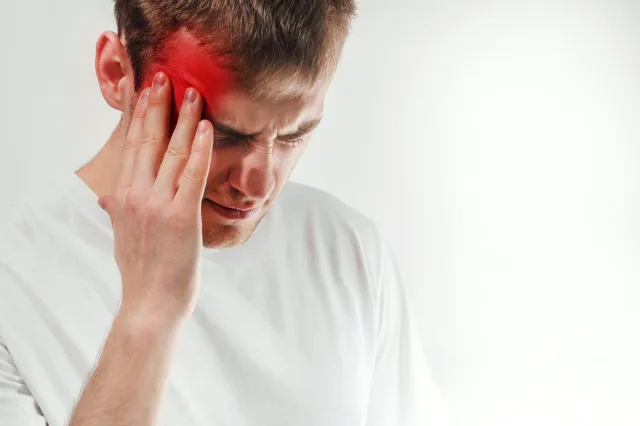Head / Spine Trauma
Head Trauma
Head injury can arise from blunt or penetrating trauma and result in direct injury at the impact site. Indirect injury may also be caused by movement of the brain within the skull, leading to contusions on the opposite side of the head from the impact, or disruptive injuries to axons and blood vessels from shearing or rotational forces as the head is accelerated and decelerated after the impact.
Traumatic brain injury may be categorised as primary (damage occurring at the time of impact) or secondary (injury as a result of neurophysiological and anatomical changes minutes to days following primary insult – eg, from cerebral oedema, haematoma or increased intracranial pressure).

Aetiology
- Falls (22-43%) and assaults (30-50%) are the most common cause of a minor head injury, followed by road traffic accidents (25%). Road traffic accidents account for a far greater proportion of moderate-to-severe head injuries.
- Alcohol may be involved in up to 65% of adult head injuries.
Assessment
Head injury patients should be taken directly to a centre which can provide resuscitation and management of head injuries and trauma leading to multiple injuries.
Management should begin immediately with resuscitation, as outlined by the appropriate guidelines – eg, Adult Trauma Life Support guidelines. Head injury patients are being assessed using Glasgow Coma Scale.
Investigations
- CT Scan
- MRI brain
Types of Head injury:
- Intracranial Haemorrhage :
- Extradural: not common. Classically, the middle meningeal artery is torn under a temporal bone fracture and follows an injury-lucid interval coma pattern. However, many are non-classical. 80% progress to uncal herniation. Immediate evacuation of the haematoma is required.
- Subdural: caused by sudden acceleration-deceleration of brain parenchyma with tearing of the bridging veins. Common in severe traumatic brain injury, atrophic brains (the elderly, alcoholics) and children aged <2 years. May be acute (<24 hours), subacute (1-14 days) or chronic (>2 weeks). There may be few signs with chronic subdurals. High morbidity and mortality if acute. Surgery is usually required.
- Subarachnoid: the most common haemorrhage in moderate-to-severe injury. May present with meningeal signs and has a significant mortality.
- Intracerebral: cerebral contusions are common and often associated with a subarachnoid haemorrhage. Intracerebral haemorrhage can occur days after significant blunt trauma, often at the site of resolving contusions (especially in patients with coagulopathy). CT scans in the immediate post-injury phase may be normal.
- Extracranial haemorrhage : scalp lacerations, nasal injuries and injuries to the face and neck can lead to significant blood loss
- Skull fractures : up to 50% will not have significant loss of consciousness or any neurological findings. Prophylactic antibiotics are controversial.
- Diffuse axonal injury : shearing/rotational forces disrupt axonal fibres in the white matter and brainstem. Common in motor vehicle accidents and ‘shaken baby syndrome’. Injury occurs immediately and is essentially irreversible. There is a rapid increase in intracranial pressure and patients are often unresponsive. CT scan may be normal. Treatment is limited to minimising secondary damage.
- Penetrating injuries – eg, gunshot wounds. There is a high incidence of infection and mortality.
Management
Medical management with anti edema measures(Mannitol/Glycerol etc),anti epileptic drugs and other supportive treatment Surgery in patients with have poor GCS with large hematoma/compound depressed fracture/CSF leak etc.
Spine Trauma
Young males are more likely to be affected by trauma. Cervical and dorsolumbar spine is more often likely site of trauma.
Traumatic spine fractures occur when a traumatic direct or indirect force is applied to the spine, resulting in a fracture in the vertebrae. The vertebrae collapse and result in a compressed, fractured vertebra.

Signs and symptoms
Symptoms of traumatic spine fracture depend on the location and severity of the fracture. Common symptoms include:
- Significant neck or back pain that is made worse with movement
- Numbness, tingling or weakness
- Difficulties with bowel and bladder functions
Potential Causes
Traumatic spine fractures are often caused by a car accident, fall, sports injury or gun shot.
Diagnosis
Diagnosis of traumatic spine fractures start with a physical exam and medical history. Other procedures and tests may be needed to diagnose a fracture, Including x-rays , computed tomography (CT) and magnetic resonance imaging (MRI).I
Treatment options
There are a few possible treatment options depending on the severity of the fracture and stability of the spine :
- Bracing to stabilize the fracture
- Decompression and fusion
Looking for Neuro
Surgeon?
Simply give us a call and book an appointment for yourself. We are here to help. Walk into our Hospital and let us take a closer look to suggest the best treatment you need.
